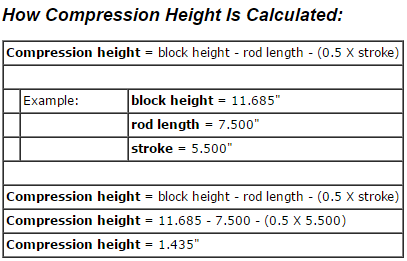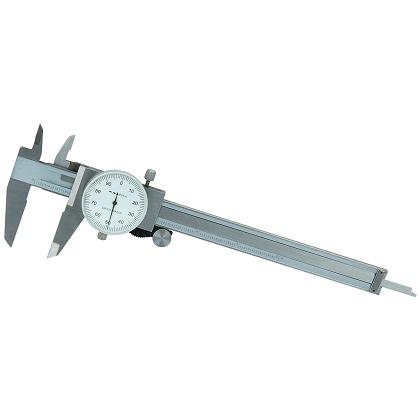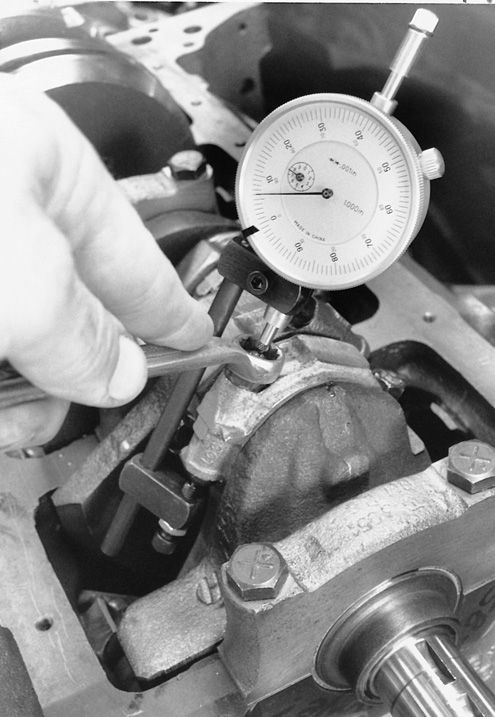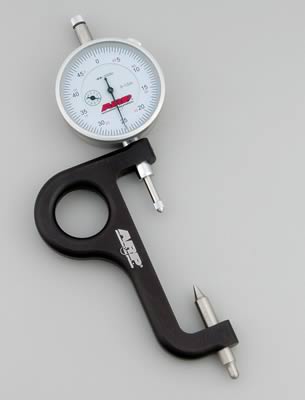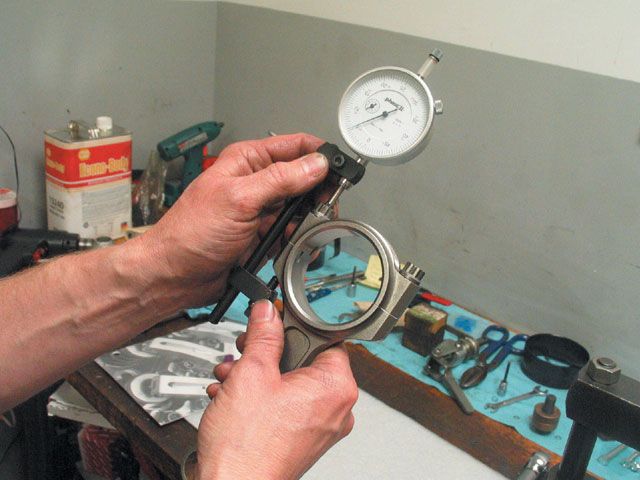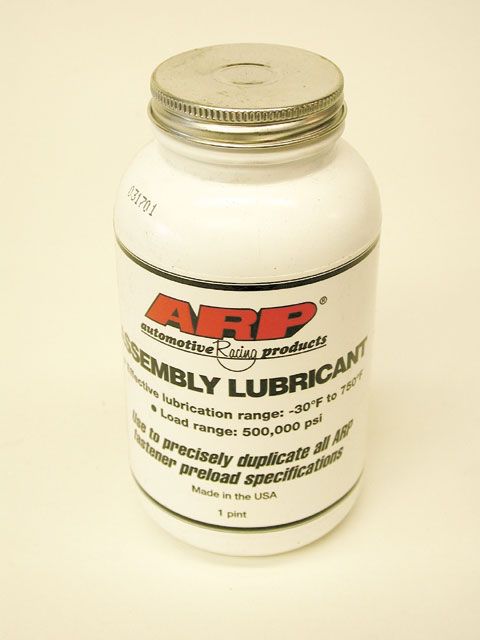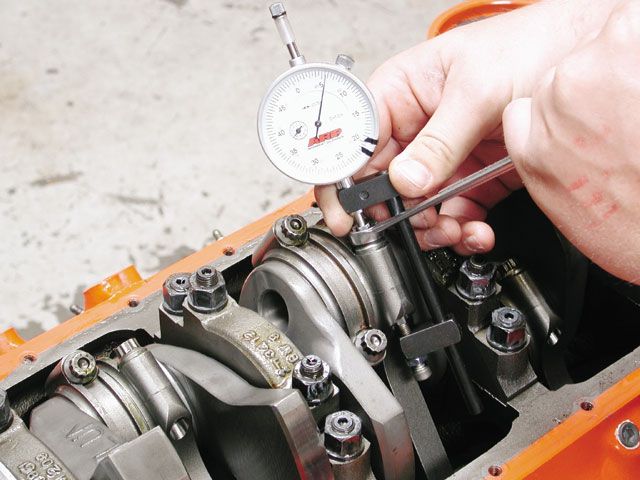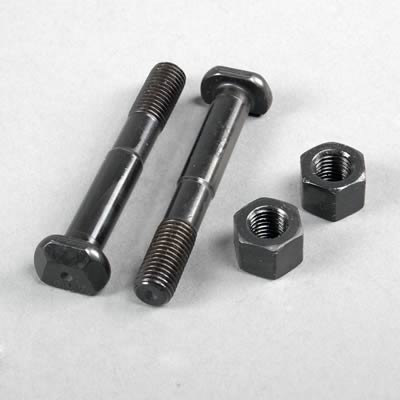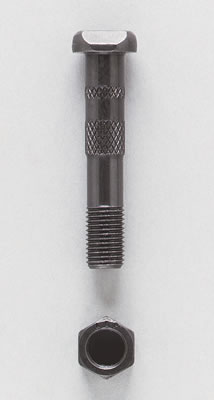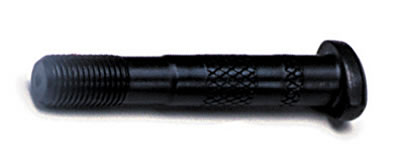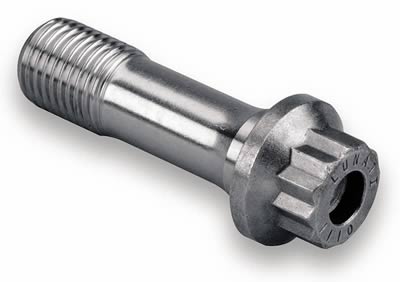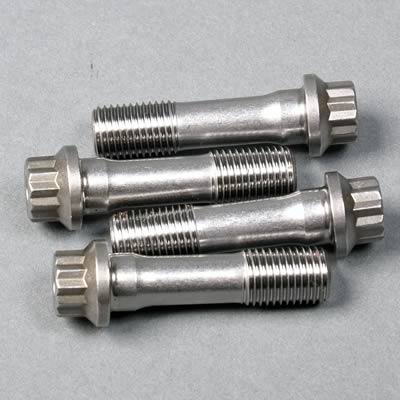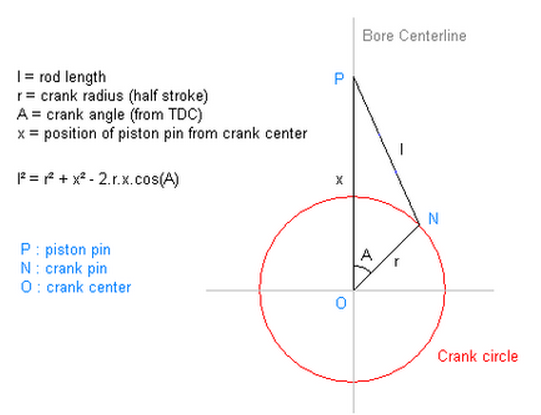enigma57
reliable source of info
Re: bore to stroke ratio
 Thanks for the cam recommendations and timing card location info, Grumpy! I ran the Crower cams through Dyno 2003 with my 427 engine combo specs. Used valve lift with 1.6 rockers as suggested.
Thanks for the cam recommendations and timing card location info, Grumpy! I ran the Crower cams through Dyno 2003 with my 427 engine combo specs. Used valve lift with 1.6 rockers as suggested.
Of the 2 Crower grinds, my engine combo favours the larger of the 2 cams (00273S). Here are the figures I got.......
------RPMs----- HP ---TQ
2,000 RPMs - 178 - 466 - Cam, Crower 00258S hydraulic, flat tappet, 236 deg. int./242 deg. exh. @ 0.050", 106 deg. LSA, 0.479" int. / 0.475" exh. lift at valve
2,500 RPMs - 228 - 479 - Note: lift shown is with 1.6 rockers
3,000 RPMs - 282 - 493 - Peak HP - 425 @ 5,000 RPMs
3,500 RPMs - 338 - 508 - Peak TQ - 508 ft./lb. @ 3,5000 RPMs
4,000 RPMs - 387 - 508
4,500 RPMs - 416 - 486
5,000 RPMs - 425 - 446 - Avg. HP - 2,000 to 4,000 RPMs, 282.6
5,500 RPMs - 419 - 400 - Avg. TQ - 2,000 to 4,000 RPMs, 490.8 ft./lb.
6,000 RPMs - 395 - 346
------RPMs----- HP ---TQ
2,000 RPMs - 170 - 447 - Cam, Crower 00273S hydraulic, flat tappet, 239 deg. int./248 deg. exh. @ 0.050", 107 deg. LSA, 0.539" int. / 0.547" exh. lift at valve
2,500 RPMs - 225 - 473 - Note: lift shown is with 1.6 rockers
3,000 RPMs - 285 - 499 - Peak HP - 510 @ 5,500 RPMs
3,500 RPMs - 352 - 528 - Peak TQ - 546 ft./lb. @ 4,500 RPMs
4,000 RPMs - 415 - 544
4,500 RPMs - 468 - 546
5,000 RPMs - 496 - 521 - Avg. HP - 2,000 to 4,000 RPMs, 289.4
5,500 RPMs - 510 - 487 - Avg. TQ - 2,000 to 4,000 RPMs, 498.2 ft./lb.
6,000 RPMs - 502 - 439
Also ran the 2 Crane solid lifter cams mentioned on your link here......
viewtopic.php?f=52&t=1070
------RPMs----- HP ---TQ
2,000 RPMs - 163 - 427 - Cam, Crane 110921 solid, flat tappet, 244 deg. int./252 deg. exh. @ 0.050", 106 deg. LSA, 0.518" int. / 0.536" exh. lift at valve
2,500 RPMs - 217 - 456 - Note: 1.6 rockers raise peaks by 4 - 5 HP & ft./lb. TQ, but power at lower RPMs remains the same (used 1.5 rockers for simulation)
3,000 RPMs - 275 - 482 - Peak HP - 509 @ 5,500 RPMs
3,500 RPMs - 343 - 514 - Peak TQ - 539 ft./lb. @ 4,500 RPMs
4,000 RPMs - 407 - 535
4,500 RPMs - 462 - 539
5,000 RPMs - 492 - 517 - Avg. HP - 2,000 to 4,000 RPMs, 281
5,500 RPMs - 509 - 486 - Avg. TQ - 2,000 to 4,000 RPMs, 482.8 ft./lb.
6,000 RPMs - 504 - 441
------RPMs----- HP ---TQ
2,000 RPMs - 166 - 435 - Crane 114681 solid, flat tappet, 244 deg. int./252 deg. exh. @ 0.050", 112 deg. LSA (per DD2003), 0.518" int. / 0.536" exh. lift at valve
2,500 RPMs - 220 - 463 - Note: 1.5 rockers used for simulation
3,000 RPMs - 279 - 488 - Peak HP - 511 @ 5,500 RPMs
3,500 RPMs - 345 - 518 - Peak TQ - 546 ft./lb. @ 4,500 RPMs
4,000 RPMs - 413 - 542
4,500 RPMs - 468 - 546
5,000 RPMs - 500 - 525 - Avg. HP - 2,000 to 4,000 RPMs, 284.6
5,500 RPMs - 511 - 528 - Avg. TQ - 2,000 to 4,000 RPMs, 489.2 ft./lb.
6,000 RPMs - 504 - 441
And here are the figures I got for the 2 Isky cams that came out best in prior calculations.....
------RPMs----- HP ---TQ
2,000 RPMs - 187 - 491 - Cam, Isky 274 Mega hydraulic, flat tappet, 226 deg. int./226 deg. exh. @ 0.050", 108 deg. LSA, 0.490" lift at valve (both)
2,500 RPMs - 243 - 510 - Note: 1.6 rockers raise peaks by 4 - 5 HP & ft./lb. TQ, but power at lower RPMs remains the same (used 1.5 rockers for simulation)
3,000 RPMs - 302 - 528 - Peak HP - 478 @ 5,000 RPMs
3,500 RPMs - 362 - 543 - Peak TQ - 547 ft./lb. @ 4,000 RPMs
4,000 RPMs - 417 - 547
4,500 RPMs - 458 - 535
5,000 RPMs - 478 - 502 - Avg. HP - 2,000 to 4,000 RPMs, 302.2
5,500 RPMs - 468 - 447 - Avg. TQ - 2,000 to 4,000 RPMs, 523.8 ft./lb.
6,000 RPMs - 446 - 390
------RPMs----- HP ---TQ
2,000 RPMs - 184 - 483 - Cam, Isky 530-A solid, flat tappet, 242 deg. int./246 deg. exh. @ 0.050", 106 deg. LSA, 0.530" int./ 0.535" lift at valve
2,500 RPMs - 239 - 501 - Note: 1.5 rockers used for simulation
3,000 RPMs - 297 - 520 - Peak HP - 517 @ 5,500 RPMs
3,500 RPMs - 359 - 538 - Peak TQ - 548 ft./lb. @ 4,500 RPMs
4,000 RPMs - 417 - 548
4,500 RPMs - 470 - 548
5,000 RPMs - 505 - 530 - Avg. HP - 2,000 to 4,000 RPMs, 299.2
5,500 RPMs - 517 - 493 - Avg. TQ - 2,000 to 4,000 RPMs, 518 ft./lb.
6,000 RPMs - 509 - 446
The Isky cams were run with 1.5 rockers, as I tried 1.6 on intake only, then 1.6 on exhaust only and then 1.6 for both. Power remained the same over the lower RPMs and showed only a small increase (4 - 5 HP & ft./lb. TQ) at peak TQ and HP with 1.6 rockers on both.
The Crower cams were run with valve lift calculated for 1.6 rockers as suggested.
The Crane cams were run with 1.5 rockers, as I tried 1.6 on intake only, then 1.6 on exhaust only and then 1.6 for both. Power remained the same over the lower RPMs and showed only a small increase (4 - 5 HP & ft./lb. TQ) at peak TQ and HP.
I have ranked the 2 Isky, the 2 Crower and the 2 Crane cams below by how they came out based upon average HP and TQ between 2,000 and 4,000 RPMs (the engine speeds my engine will see most out on the road)......
Isky 274 Mega hydraulic, flat tappet, 226 deg. int./226 deg. exh. @ 0.050", 108 deg. LSA, 0.490" lift at valve (both)
Peak HP - 478 @ 5,000 RPMs
Peak TQ - 547 ft./lb. @ 4,000 RPMs
Avg. HP - 2,000 to 4,000 RPMs, 302.2
Avg. TQ - 2,000 to 4,000 RPMs, 523.8 ft./lb.
Isky 530-A solid, flat tappet, 242 deg. int./246 deg. exh. @ 0.050", 106 deg. LSA, 0.530" int./ 0.535" lift at valve
Peak HP - 517 @ 5,500 RPMs
Peak TQ - 548 ft./lb. @ 4,500 RPMs
Avg. HP - 2,000 to 4,000 RPMs, 299.2
Avg. TQ - 2,000 to 4,000 RPMs, 518 ft./lb.
Crower 00273S hydraulic, flat tappet, 239 deg. int./248 deg. exh. @ 0.050", 107 deg. LSA, 0.539" int./0.547" exh. lift at valve
Peak HP - 510 @ 5,500 RPMs
Peak TQ - 546 ft./lb. @ 4,500 RPMs
Avg. HP - 2,000 to 4,000 RPMs, 289.4
Avg. TQ - 2,000 to 4,000 RPMs, 498.2 ft./lb.
Crower 00258S hydraulic, flat tappet, 236 deg. int./242 deg. exh. @ 0.050", 106 deg. LSA, 0.479" int./0.475" exh. lift at valve
Peak HP - 425 @ 5,000 RPMs
Peak TQ - 508 ft./lb. @ 3,5000 RPMs
Avg. HP - 2,000 to 4,000 RPMs, 282.6
Avg. TQ - 2,000 to 4,000 RPMs, 490.8 ft./lb.
Crane 114681 solid, flat tappet, 244 deg. int./252 deg. exh. @ 0.050", 112 deg. LSA (per DD2003), 0.518" int. / 0.536" exh. lift at valve
Peak HP - 511 @ 5,500 RPMs
Peak TQ - 546 ft./lb. @ 4,500 RPMs
Avg. HP - 2,000 to 4,000 RPMs, 284.6
Avg. TQ - 2,000 to 4,000 RPMs, 489.2 ft./lb.
Crane 110921 solid, flat tappet, 244 deg. int./252 deg. exh. @ 0.050", 106 deg. LSA, 0.518" int. / 0.536" exh. lift at valve
Peak HP - 509 @ 5,500 RPMs
Peak TQ - 539 ft./lb. @ 4,500 RPMs
Avg. HP - 2,000 to 4,000 RPMs, 281
Avg. TQ - 2,000 to 4,000 RPMs, 482.8 ft./lb.
As you predicted, of the 2 Crane cams, the Dyno 2003 program favoured the wider LSA version of the same cam.
Not sure why the Isky cam grinds made more comparative power than did the Crower and Crane grinds (in the RPM range my engine will be run at most), but my engine combo seems to respond better to the Isky cams, at least in computer simulation. And as you say, real world performance may vary.
Really appreciate your assistance, Grumpy!
Best regards,
Harry
Of the 2 Crower grinds, my engine combo favours the larger of the 2 cams (00273S). Here are the figures I got.......
------RPMs----- HP ---TQ
2,000 RPMs - 178 - 466 - Cam, Crower 00258S hydraulic, flat tappet, 236 deg. int./242 deg. exh. @ 0.050", 106 deg. LSA, 0.479" int. / 0.475" exh. lift at valve
2,500 RPMs - 228 - 479 - Note: lift shown is with 1.6 rockers
3,000 RPMs - 282 - 493 - Peak HP - 425 @ 5,000 RPMs
3,500 RPMs - 338 - 508 - Peak TQ - 508 ft./lb. @ 3,5000 RPMs
4,000 RPMs - 387 - 508
4,500 RPMs - 416 - 486
5,000 RPMs - 425 - 446 - Avg. HP - 2,000 to 4,000 RPMs, 282.6
5,500 RPMs - 419 - 400 - Avg. TQ - 2,000 to 4,000 RPMs, 490.8 ft./lb.
6,000 RPMs - 395 - 346
------RPMs----- HP ---TQ
2,000 RPMs - 170 - 447 - Cam, Crower 00273S hydraulic, flat tappet, 239 deg. int./248 deg. exh. @ 0.050", 107 deg. LSA, 0.539" int. / 0.547" exh. lift at valve
2,500 RPMs - 225 - 473 - Note: lift shown is with 1.6 rockers
3,000 RPMs - 285 - 499 - Peak HP - 510 @ 5,500 RPMs
3,500 RPMs - 352 - 528 - Peak TQ - 546 ft./lb. @ 4,500 RPMs
4,000 RPMs - 415 - 544
4,500 RPMs - 468 - 546
5,000 RPMs - 496 - 521 - Avg. HP - 2,000 to 4,000 RPMs, 289.4
5,500 RPMs - 510 - 487 - Avg. TQ - 2,000 to 4,000 RPMs, 498.2 ft./lb.
6,000 RPMs - 502 - 439
Also ran the 2 Crane solid lifter cams mentioned on your link here......
viewtopic.php?f=52&t=1070
------RPMs----- HP ---TQ
2,000 RPMs - 163 - 427 - Cam, Crane 110921 solid, flat tappet, 244 deg. int./252 deg. exh. @ 0.050", 106 deg. LSA, 0.518" int. / 0.536" exh. lift at valve
2,500 RPMs - 217 - 456 - Note: 1.6 rockers raise peaks by 4 - 5 HP & ft./lb. TQ, but power at lower RPMs remains the same (used 1.5 rockers for simulation)
3,000 RPMs - 275 - 482 - Peak HP - 509 @ 5,500 RPMs
3,500 RPMs - 343 - 514 - Peak TQ - 539 ft./lb. @ 4,500 RPMs
4,000 RPMs - 407 - 535
4,500 RPMs - 462 - 539
5,000 RPMs - 492 - 517 - Avg. HP - 2,000 to 4,000 RPMs, 281
5,500 RPMs - 509 - 486 - Avg. TQ - 2,000 to 4,000 RPMs, 482.8 ft./lb.
6,000 RPMs - 504 - 441
------RPMs----- HP ---TQ
2,000 RPMs - 166 - 435 - Crane 114681 solid, flat tappet, 244 deg. int./252 deg. exh. @ 0.050", 112 deg. LSA (per DD2003), 0.518" int. / 0.536" exh. lift at valve
2,500 RPMs - 220 - 463 - Note: 1.5 rockers used for simulation
3,000 RPMs - 279 - 488 - Peak HP - 511 @ 5,500 RPMs
3,500 RPMs - 345 - 518 - Peak TQ - 546 ft./lb. @ 4,500 RPMs
4,000 RPMs - 413 - 542
4,500 RPMs - 468 - 546
5,000 RPMs - 500 - 525 - Avg. HP - 2,000 to 4,000 RPMs, 284.6
5,500 RPMs - 511 - 528 - Avg. TQ - 2,000 to 4,000 RPMs, 489.2 ft./lb.
6,000 RPMs - 504 - 441
And here are the figures I got for the 2 Isky cams that came out best in prior calculations.....
------RPMs----- HP ---TQ
2,000 RPMs - 187 - 491 - Cam, Isky 274 Mega hydraulic, flat tappet, 226 deg. int./226 deg. exh. @ 0.050", 108 deg. LSA, 0.490" lift at valve (both)
2,500 RPMs - 243 - 510 - Note: 1.6 rockers raise peaks by 4 - 5 HP & ft./lb. TQ, but power at lower RPMs remains the same (used 1.5 rockers for simulation)
3,000 RPMs - 302 - 528 - Peak HP - 478 @ 5,000 RPMs
3,500 RPMs - 362 - 543 - Peak TQ - 547 ft./lb. @ 4,000 RPMs
4,000 RPMs - 417 - 547
4,500 RPMs - 458 - 535
5,000 RPMs - 478 - 502 - Avg. HP - 2,000 to 4,000 RPMs, 302.2
5,500 RPMs - 468 - 447 - Avg. TQ - 2,000 to 4,000 RPMs, 523.8 ft./lb.
6,000 RPMs - 446 - 390
------RPMs----- HP ---TQ
2,000 RPMs - 184 - 483 - Cam, Isky 530-A solid, flat tappet, 242 deg. int./246 deg. exh. @ 0.050", 106 deg. LSA, 0.530" int./ 0.535" lift at valve
2,500 RPMs - 239 - 501 - Note: 1.5 rockers used for simulation
3,000 RPMs - 297 - 520 - Peak HP - 517 @ 5,500 RPMs
3,500 RPMs - 359 - 538 - Peak TQ - 548 ft./lb. @ 4,500 RPMs
4,000 RPMs - 417 - 548
4,500 RPMs - 470 - 548
5,000 RPMs - 505 - 530 - Avg. HP - 2,000 to 4,000 RPMs, 299.2
5,500 RPMs - 517 - 493 - Avg. TQ - 2,000 to 4,000 RPMs, 518 ft./lb.
6,000 RPMs - 509 - 446
The Isky cams were run with 1.5 rockers, as I tried 1.6 on intake only, then 1.6 on exhaust only and then 1.6 for both. Power remained the same over the lower RPMs and showed only a small increase (4 - 5 HP & ft./lb. TQ) at peak TQ and HP with 1.6 rockers on both.
The Crower cams were run with valve lift calculated for 1.6 rockers as suggested.
The Crane cams were run with 1.5 rockers, as I tried 1.6 on intake only, then 1.6 on exhaust only and then 1.6 for both. Power remained the same over the lower RPMs and showed only a small increase (4 - 5 HP & ft./lb. TQ) at peak TQ and HP.
I have ranked the 2 Isky, the 2 Crower and the 2 Crane cams below by how they came out based upon average HP and TQ between 2,000 and 4,000 RPMs (the engine speeds my engine will see most out on the road)......
Isky 274 Mega hydraulic, flat tappet, 226 deg. int./226 deg. exh. @ 0.050", 108 deg. LSA, 0.490" lift at valve (both)
Peak HP - 478 @ 5,000 RPMs
Peak TQ - 547 ft./lb. @ 4,000 RPMs
Avg. HP - 2,000 to 4,000 RPMs, 302.2
Avg. TQ - 2,000 to 4,000 RPMs, 523.8 ft./lb.
Isky 530-A solid, flat tappet, 242 deg. int./246 deg. exh. @ 0.050", 106 deg. LSA, 0.530" int./ 0.535" lift at valve
Peak HP - 517 @ 5,500 RPMs
Peak TQ - 548 ft./lb. @ 4,500 RPMs
Avg. HP - 2,000 to 4,000 RPMs, 299.2
Avg. TQ - 2,000 to 4,000 RPMs, 518 ft./lb.
Crower 00273S hydraulic, flat tappet, 239 deg. int./248 deg. exh. @ 0.050", 107 deg. LSA, 0.539" int./0.547" exh. lift at valve
Peak HP - 510 @ 5,500 RPMs
Peak TQ - 546 ft./lb. @ 4,500 RPMs
Avg. HP - 2,000 to 4,000 RPMs, 289.4
Avg. TQ - 2,000 to 4,000 RPMs, 498.2 ft./lb.
Crower 00258S hydraulic, flat tappet, 236 deg. int./242 deg. exh. @ 0.050", 106 deg. LSA, 0.479" int./0.475" exh. lift at valve
Peak HP - 425 @ 5,000 RPMs
Peak TQ - 508 ft./lb. @ 3,5000 RPMs
Avg. HP - 2,000 to 4,000 RPMs, 282.6
Avg. TQ - 2,000 to 4,000 RPMs, 490.8 ft./lb.
Crane 114681 solid, flat tappet, 244 deg. int./252 deg. exh. @ 0.050", 112 deg. LSA (per DD2003), 0.518" int. / 0.536" exh. lift at valve
Peak HP - 511 @ 5,500 RPMs
Peak TQ - 546 ft./lb. @ 4,500 RPMs
Avg. HP - 2,000 to 4,000 RPMs, 284.6
Avg. TQ - 2,000 to 4,000 RPMs, 489.2 ft./lb.
Crane 110921 solid, flat tappet, 244 deg. int./252 deg. exh. @ 0.050", 106 deg. LSA, 0.518" int. / 0.536" exh. lift at valve
Peak HP - 509 @ 5,500 RPMs
Peak TQ - 539 ft./lb. @ 4,500 RPMs
Avg. HP - 2,000 to 4,000 RPMs, 281
Avg. TQ - 2,000 to 4,000 RPMs, 482.8 ft./lb.
As you predicted, of the 2 Crane cams, the Dyno 2003 program favoured the wider LSA version of the same cam.
Not sure why the Isky cam grinds made more comparative power than did the Crower and Crane grinds (in the RPM range my engine will be run at most), but my engine combo seems to respond better to the Isky cams, at least in computer simulation. And as you say, real world performance may vary.
Really appreciate your assistance, Grumpy!
Best regards,
Harry

